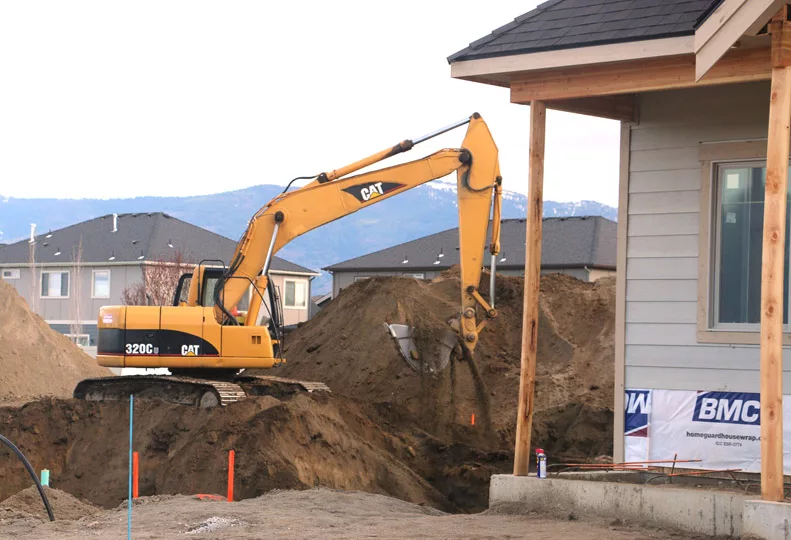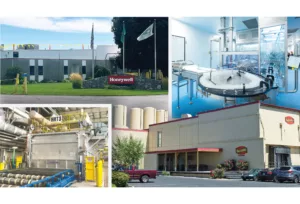Not a lotta lots in Spokane
Land shortage to hinder entry-level homebuyers, builders contend

New-home construction is outpacing the supply of available land to build houses on, and that’s contributing to rising home prices and the dwindling inventory of existing homes for sale, some developers here say.
Jim Frank, CEO of Liberty Lake-based real estate development company Greenstone Corp., says he’s concerned that lot shortages and resulting price increases are excluding a growing percentage of young people from the homebuying market, creating a generational issue that might only get worse here for at least another decade.
“New construction has picked up at a pace that the lot inventory won’t be able to sustain,” Frank says. “It’s getting progressively worse.”
Since 2009, nearly 3,000 more building permits were issued for new home starts than new lots have been created for future home construction, meaning developers are depleting the inventory of buildable land throughout Spokane County.
Just last year, for example, more than 1,800 building permits were issued for single-family homes in Spokane County and the cities of Spokane, Spokane Valley, and Liberty Lake, while only 1,450 new lots were created throughout the county, according to data compiled from multiple sources.
New homes sold in Spokane County through the Spokane Association of Realtors Multiple Listing Service in 2016 had an average selling price of $290,400, up from an average price of $283,800 in 2015. Not all new homes are sold through the MLS, since many homes are sold before they’re built.
The increases in new and existing home prices may be accelerating, Frank says.
“We already have a significant increase in median home prices between last year and this year, and it’s just going to continue with no relief valve,” he contends.
The average home price for 166 new homes sold throughout Spokane County through the MLS in the first quarter of this year was $302,100, an increase of 10.5 percent compared with the year-earlier quarter.
The median sales price for all homes sold in the county in 2016 through the MLS was $195,000, an increase of 8.4 percent compared with the 2015 median sales price of $179,900.
More recently, the median sales price for all homes sold through the MLS in March was $204,900, up 9.3 percent compared with prices in March 2016.
Frank doesn’t expect land availability to catch up with demand for many years.
Land availability in Spokane County is restricted by its urban growth boundaries, he says.
“The county entered into an agreement on the urban growth boundary that it can’t modify until 2025,” he asserts. “Then it will take five years to get lots platted and worked into the system.”
The Washington state Growth Management Act requires counties and cities to establish urban growth boundaries to encourage in-fill development and limit urban sprawl.
The act also requires counties to set urban growth boundaries that will accommodate estimated population growth 20 years into the future.
John Peterson, planning director for Spokane County, says the county’s attempt to expand the urban growth boundaries in 2013 was appealed, and the county reached a settlement agreement for a smaller expansion of the boundaries last year.
“The county agreed not to expand it (farther) unless certain triggers are met,” he says. One trigger would be faster-than-expected population growth.
According to the agreement, the 2037 population estimate for Spokane County is about 583,400 residents, a nearly 17 percent increase compared with the 2017 population estimate of 499,350 residents.
While the urban growth areas identify vacant and underutilized land where development would be appropriate, the county doesn’t monitor actual availability of lots, Peterson says.
The Growth Management Act requires counties and cities to revisit urban growth boundaries every 10 years, but it also requires that most of the development capacity within urban growth areas be reached before their boundaries can be expanded, he says.
As director of development for Spokane Valley-based Viking Construction Inc., one of Scott Krajack’s responsibilities is to maintain an inventory of land that can be developed into single-family homes or multifamily units.
“We’re not out of lots, but we don’t have as many as we would like,” Krajack says. “There’s going to be a shortage of lots until developers can get entitlements and get streets and roads and infrastructure built.”
He says Viking Construction, which does business as Viking Homes, has obtained developable land from other developers because there’s not much raw land for sale within the urban development areas.
“We find land all the time that people want to sell, but for us it’s worthless because it’s not within the urban growth area,” Krajack says.
Frank claims there’s currently not much unplatted land for sale within the urban growth boundaries, and infill parcels are difficult and complicated to work with equitably.
“The regulatory framework in Spokane makes it difficult to do infill development, and infill development can’t keep up with demand,” he asserts.
Frank says urban growth boundaries are a statewide issue.
“Everyone wants affordable housing, but they block the ability to bring new inventory on,” he says.
The shortage of developable land will have long-term consequences for potential homebuyers, Frank predicts.
“Young people are being excluded, and they’re becoming permanent renters. That’s why the rental market is so strong,” he says. “This idea of burdening young people with the inability to purchase a home is going to be a generational issue.”
The urban growth area issues could be a boon to neighboring Kootenai County where there’s more readily available land than in Spokane County, Frank says, noting that Idaho doesn’t have designated urban growth areas.
“I do expect a percentage of new construction to shift into North Idaho,” he says. “I think we’ll see Kootenai County’s regional share of new construction increase.”
Krajack says that many developments planned four or five years ago are being built out at a quicker pace than originally projected.
He shares Frank’s concern that potential homebuyers eventually will be priced out of the market.
“The days of being able to buy a new home for under $200,000 are numbered,” he says.
Despite the potential for a land shortage and rising home prices to reach a crisis level down the road, Krajack says he anticipates strong sales for home starts will continue through 2018.
Viking Homes plans to construct this year 140 single family homes in the Spokane area, 120 in the Coeur d’Alene area, and up to 90 homes in the Tri-Cities, he says.
Related Articles
Related Products


_c.webp?t=1763626051)
_web.webp?t=1764835652)

